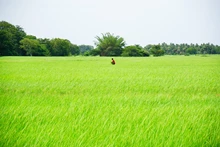
Ginger is one of the world’s most well-known and useful plants that has been used for centuries as a spice for flavouring food and as medicinal plant. Scientific name of this spice is Zingiber officinale. It is a flowering plant whose rhizome, ginger root or simply ginger, is widely used as a spice or a folk medicine.
Originated in the tropical rainforests from the Indian subcontinent to Southern Asia, it is now cultivated in the U.S. (including Hawaii), China, the West Indies, and other tropical regions. Ginger is among the earliest recorded spices to be grown and exported from southwest India. India holds fifth to seventh position in Global ginger export market, on an average. Our nation ranks number one in production globally. There are numerous interesting facts about ginger.
Let us know 25 most interesting facts of this spice.
1. Ginger is not a root, actually it is a rhizome. A rhizome is an underground stem.
2. The ginger plant is an herb.
3. Ginger is a part of the Zingiberaceae family. Turmeric and Cardamom are included in this family.
4. Ginger is native to southeastern Asia.
5. Ginger can be grown from rhizomes, available at grocery stores.
6. The mature ginger rhizomes can be harvested after 10-12 months. They are most commonly sold in grocery stores
7. Ginger is popularly grown in warmer regions and the tropics.
8. Cultivation of Ginger can be during an entire year but the best time to plant them is at the end winter and early spring.
21. Ginger produces clusters of white and pink flower buds that bloom into yellow flowers. It is often used as landscaping around subtropical homes due to its aesthetic appeal and the adaptation of the plant to warm climates.
22. Depending on Variety, the flesh of the ginger rhizome can be yellow, white or red in color, depending upon the variety.
23. Ginger has many important vitamins and minerals. It also comprises gingerol, a compound with potent antioxidant and anti-inflammatory properties, and linked to numerous health benefits.
24. In research studies it has been noted that Ginger may also reduce DNA damage from radiation and offer some protection from industrial pollutants.
25. Ginger rhizomes are often used to flavor breads, sauces, curry dishes, confections, pickles, ginger ale and ginger beer.











